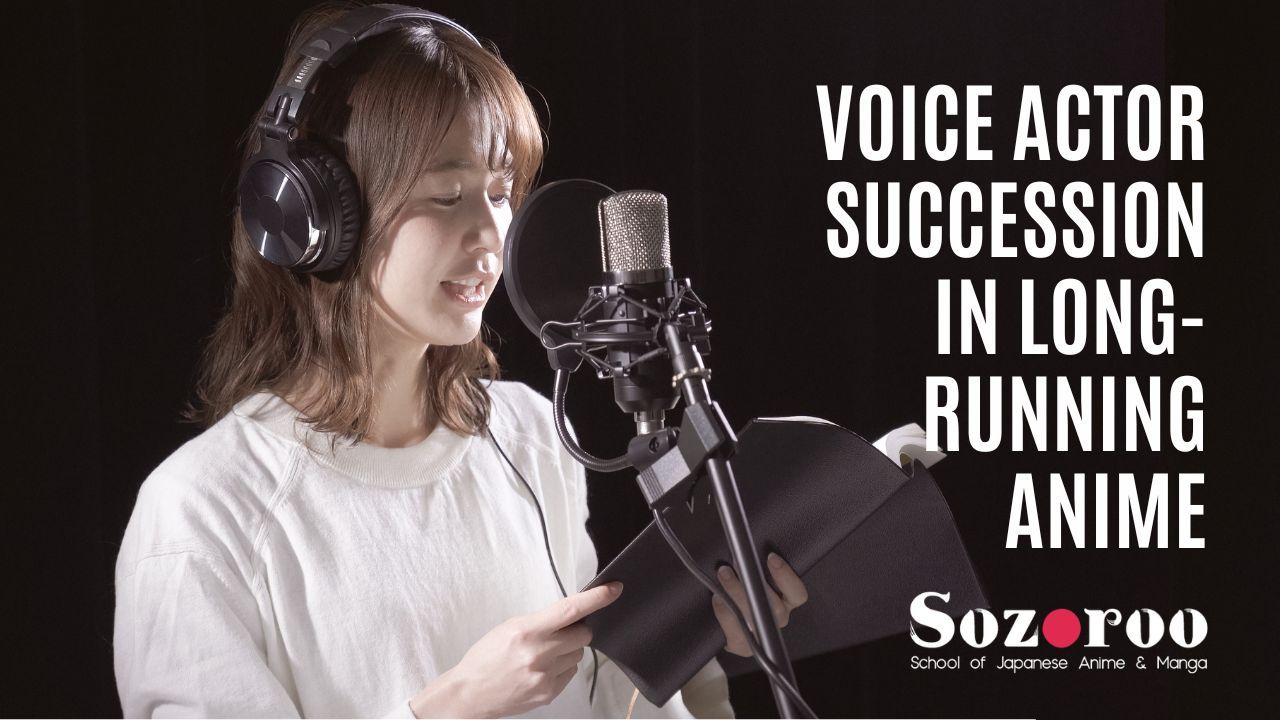
In the dynamic world of anime, replacing voice actors on long-running series is a significant challenge. This challenge is not only logistical, but also involves the emotional investment of loyal fans and the delicate balance of preserving character identity. The evolution of iconic shows such as “Doraemon” and “Lupin the Third” has revealed the complexities of voice actor transitions, shedding light on the industry's strategies and the audience's reception to these changes.
Navigating the Realm of Iconic Works and the Voice Actor Dilemma
Long-running anime series, often considered cultural touchstones, intricately weave narratives that become embedded in the hearts of their audiences. Within these narratives lies the constant presence of iconic characters, whose voices become inseparable from their identities. Series such as "GeGeGe no Kitaro" and "Doraemon" have undergone multiple voice actor changes, required the seamless integration of new talents while respectfully honored the legacy of previous actors. These transitions exemplify the industry's challenge of maintaining continuity without compromising authenticity.
The Emotional Drama of Affection and Transformation
When a beloved voice actor bids farewell to a long-running character, the ripple effect among fans is palpable. The process of replacing a voice actor often triggers nostalgia for the familiar while introducing the excitement of the new. In the case of "Doraemon," the transition from legendary voices to fresh talents was met with mixed emotions among fans. But it also brought heartwarming episodes and poignant moments that underscored the importance of character legacy and adapting to change in the anime landscape.
From Legendary Voice Actors to New Talents
Series such as “Crayon Shin-chan” and “Lupin the Third” have undergone significant voice actor changes, marking a transformative period in their story arcs. The passing of the baton from legendary voices to emerging talents symbolizes both an evolution and a preservation of the essence of anime. This evolution requires a delicate balance, as new voice actors strive to honor the original performances while adding their unique interpretations to ensure a seamless and authentic transition for audiences.
The Conflict of Time and Succession: Balancing Tradition with Change
"Sazae-san," an anime with a history spanning more than 50 years, has undergone gradual voice actor changes without causing confusion among its loyal audience. The gradual introduction of new voices, while respectfully acknowledging the contributions of previous actors, is a testament to the industry's ability to balance tradition with change. This approach avoids abrupt disruptions in character presentation and allows for organic evolution while maintaining the core identity of the series.
Passing the Baton to the Future: Embracing Change in Anime
In anime, the inevitable aging of voice actors presents a unique challenge. Balancing the tradition of established voices with the need to embrace new talents becomes critical to ensuring the longevity and relevance of these series. The process of accepting new casts becomes not only an industry requirement, but a transformative experience for audiences, reflecting the ongoing evolution and adaptability of the anime landscape.
Conclusion
The dynamic and ever-evolving realm of anime encompasses a rich tapestry of stories, characters, and, most importantly, the voices that bring them to life. The replacement of voice actors in long-running series represents more than a mere casting change; it embodies a delicate balance between honoring tradition and embracing change. With iconic works such as ‘Doraemon’, ‘Lupin the Third’, and ‘GeGeGe no Kitaro’, the industry has navigated the complicated process of succession with grace and resilience.
These transitions are not without their challenges, and often evoke emotional responses from dedicated fans who hold deep affection for the characters and their original voices. Amid the sentimentality, however, is an underlying recognition of the need for evolution. Passing the baton from legendary voices to new talent represents not just a change in casting, but a celebration of the enduring spirit of these anime series.
“Sazae-san” is a testament to the industry's ability to gradually introduce new voices without disrupting the essence of the narrative. This gradual evolution, mirrored in other long-running series, demonstrates a deep understanding of the audience's attachment to familiar characters while introducing fresh perspectives.
In essence, the anime landscape is constantly evolving, adapting to the inevitable passage of time and changing dynamics within the industry. Voice actor succession is not just a transition of talent, but a testament to the resilience and adaptability of anime as a cultural phenomenon. As fans and creators navigate this ever-changing landscape, the essence of these beloved series remains steadfast, resonating across generations and continuing to shape the vibrant world of anime for years to come.
Join Sozoroo and Dive into the World of Anime! Enjoy a 7-Day Free Trial!
Start your anime and manga creation journey with our free trial. Ignite your passion, learn from the pros, and take the first step towards your dream career in animation.
Join Sozoroo and Dive into the World of Anime! Enjoy a 7-Day Free Trial!
Start your anime and manga creation journey with our free trial. Ignite your passion, learn from the pros, and take the first step towards your dream career in animation.


